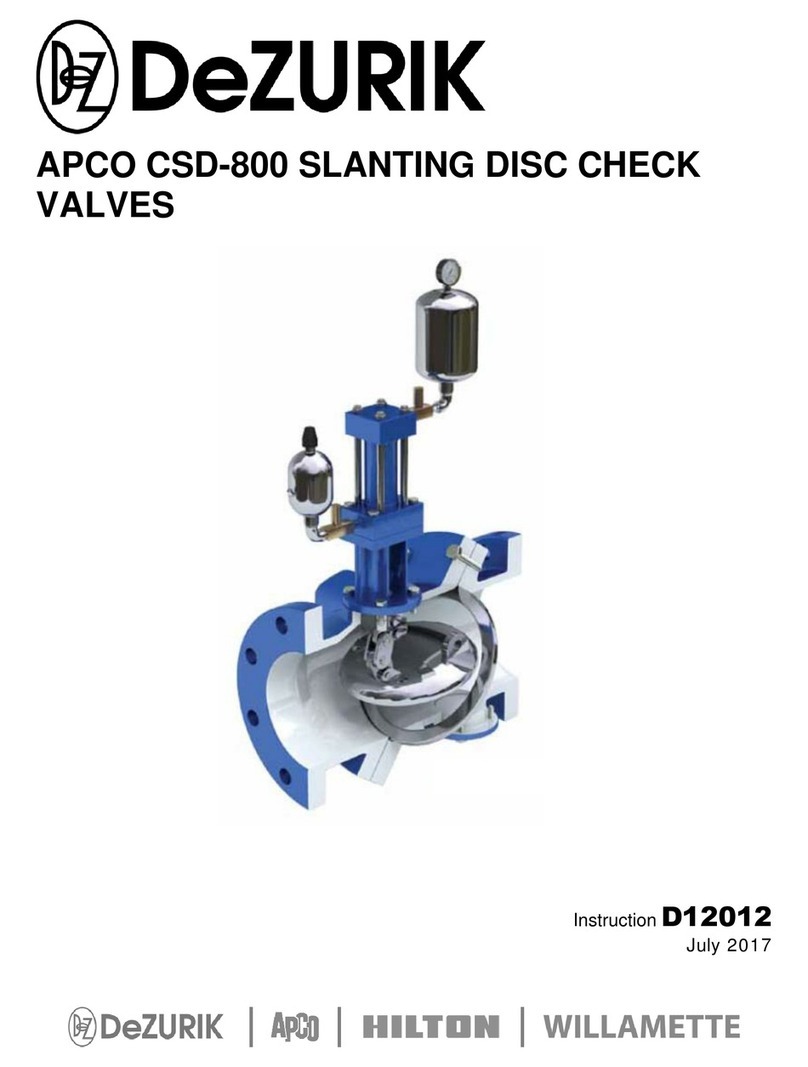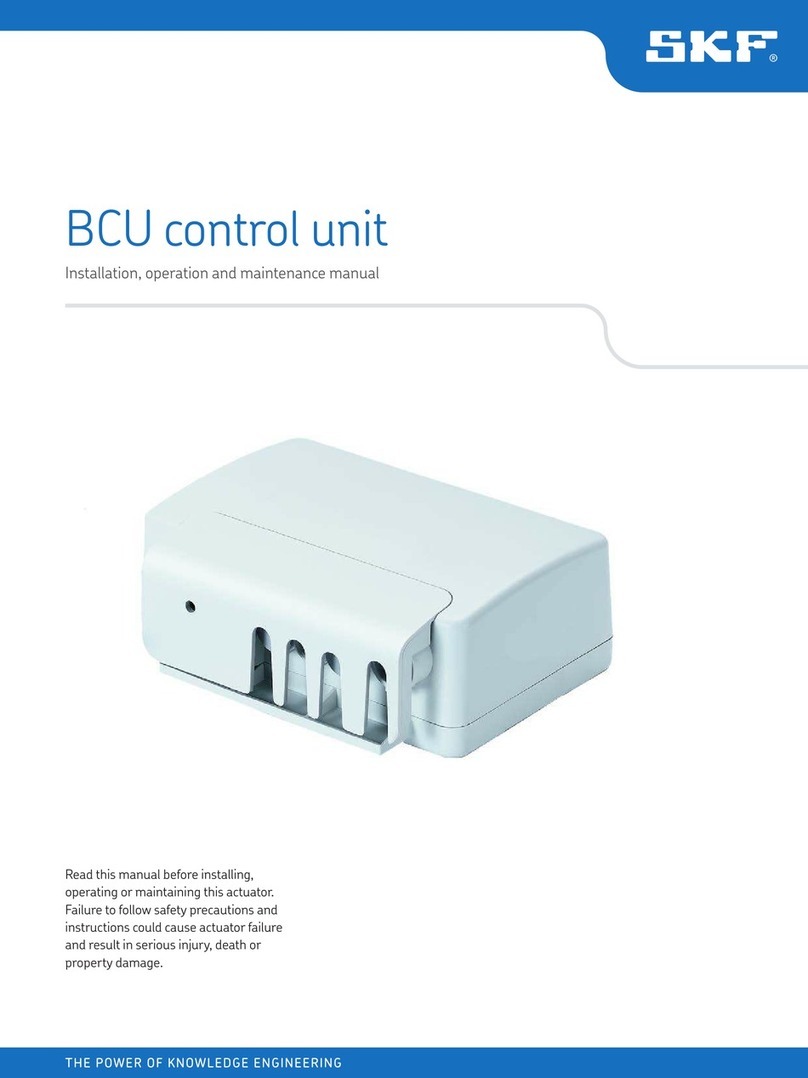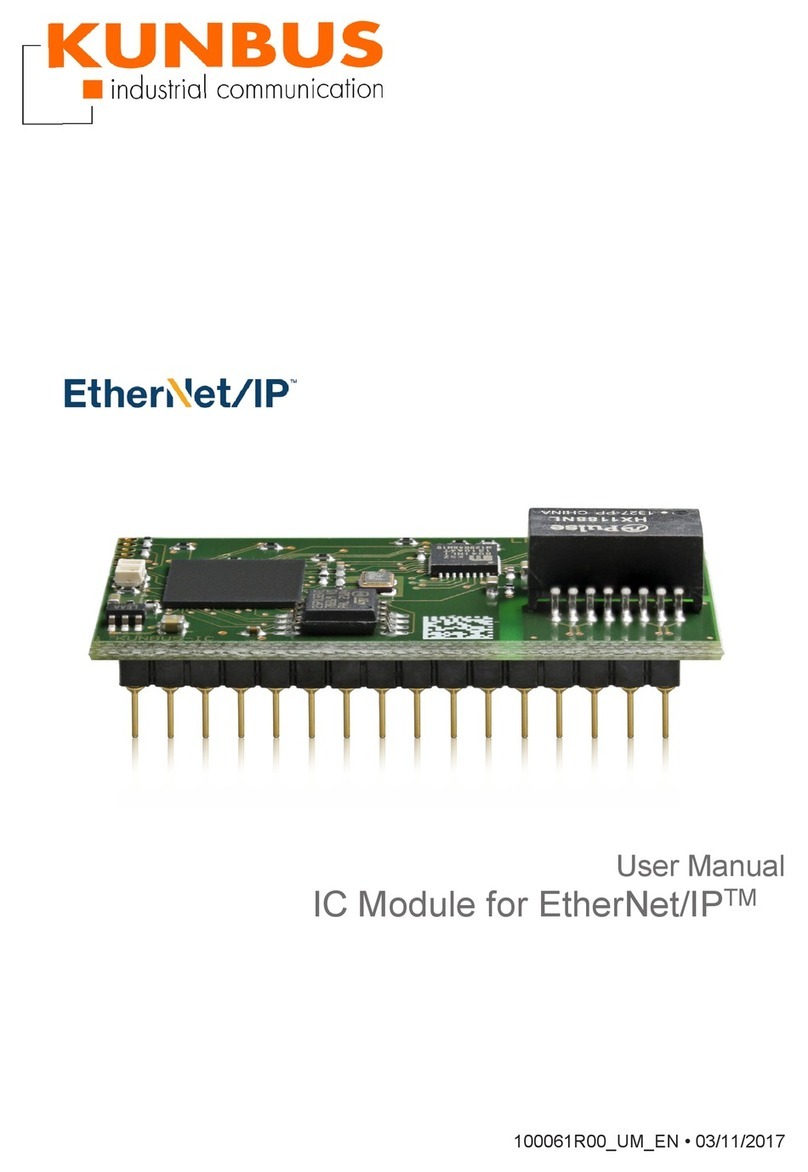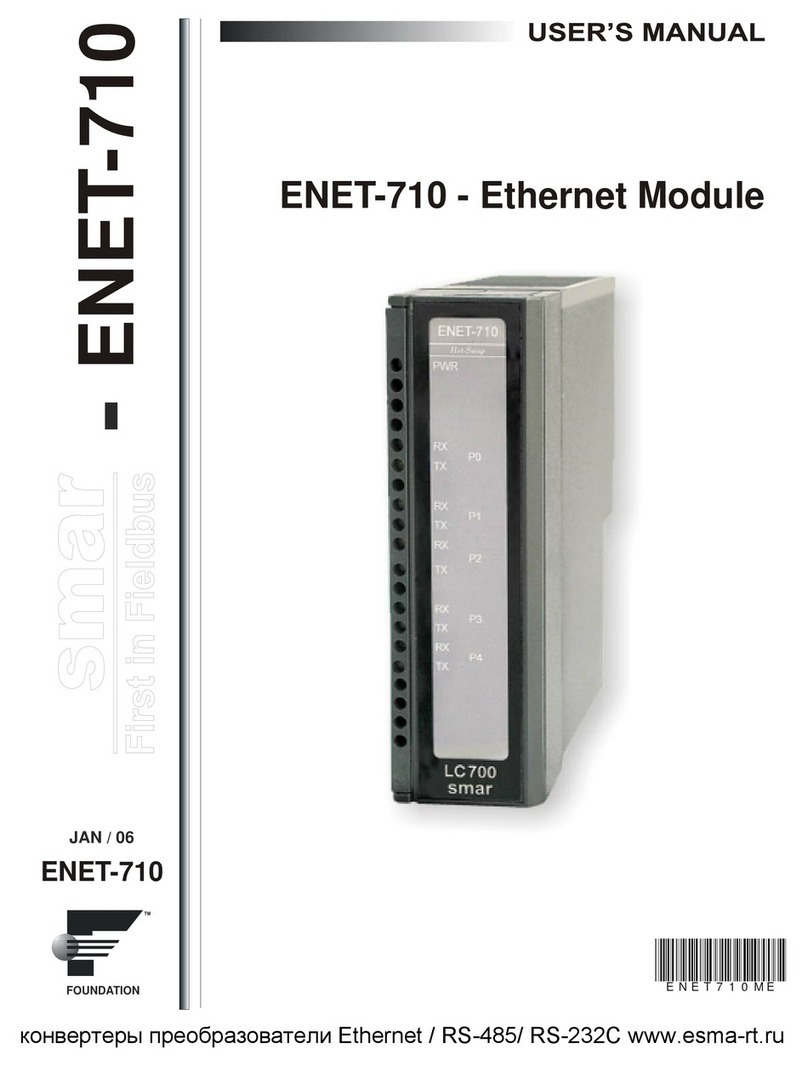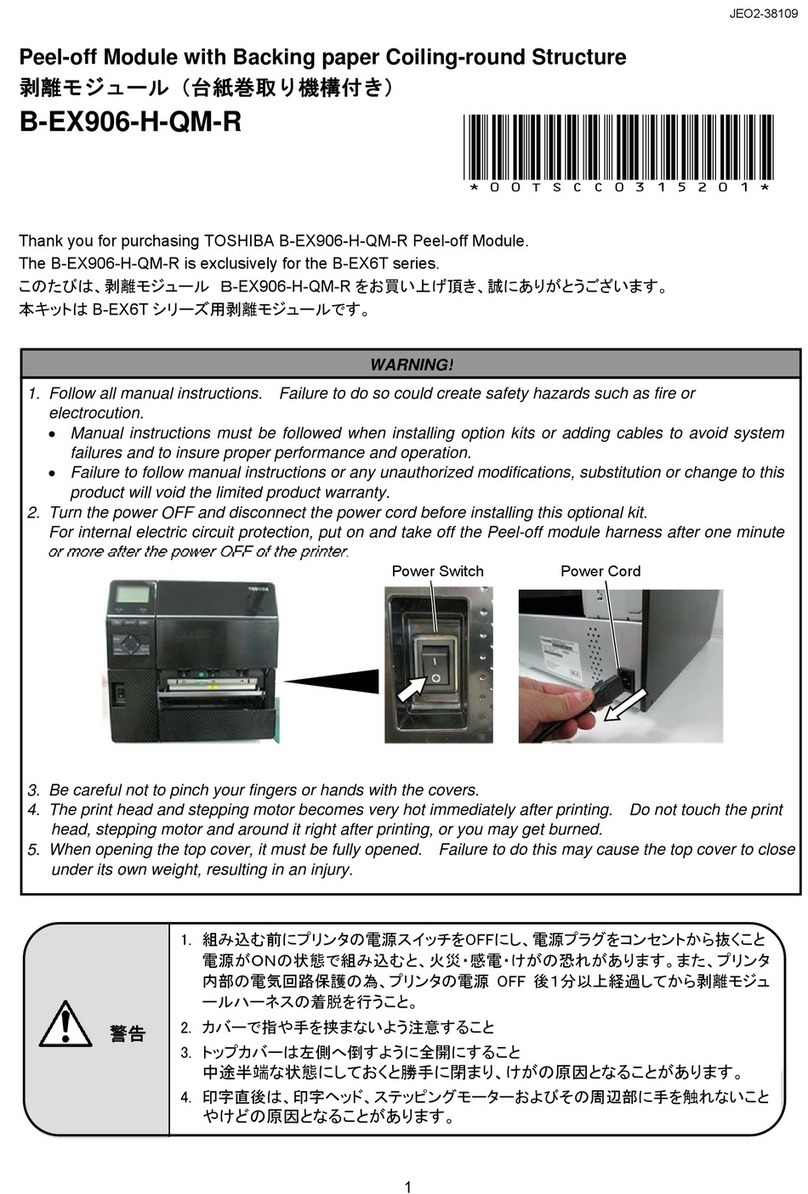Prestex P404 Mounting instructions

Installation Instructions
and User Guide
15mm & 22mm
In-Line Thermostatic Mixing Valve-TMV2
Model P404
It is important that these guidance notes are read and fully understood prior to product installation
Installation Instructions and User Guide
15mm & 22MM
In-Line Thermostatic Mixing Valve-TMV2
Model P404
It is important that these guidance notes are read and fully
understood prior to product installation
2
Year
BSEN
1287
BSEN
1111
TMV3 Model P404.indd 1 13/2/09 15:02:45

Installation
Separate isolation valves must be installed on
the hot and cold water inlet supplies.
To ensure proper performance of the
thermostatic mixing valve, the isolating valves
should preferably be full bore and always be
fully open during operation.
The mixing valve is supplied with filter
elements but it is advisable to additionally
install Y-strainers on the hot and cold water
supplies. The isolating valves and strainers
should be installed as close as practicable to
the location of the mixing valve and should
always be in an accessible location.
Before installation, the hot and cold water
supply systems must be thoroughly flushed
to remove any dirt/debris that may have
accumulated. Failure to do so may adversely
affect the performance of the mixing valve.
CONDITIONS OF NORMAL USE
Table 1
Minimum hot inlet to mixed outlet temperature
differential = 10oC
Note: Valves operating outside these
conditions can not be guaranteed by the
Scheme to operate as Type 2 valves.
The highest flow rates will be achieved under
balanced pressure conditions, but the pressure
at the valve inlets must be within a ratio of
5:1 under flow conditions and the size and
layout of pipework and fittings must take this
into account.
IMPORTANT INTRODUCTION NOTES
The valves covered by these instructions
have been tested and certified as being in
compliance with BS EN 1111:1999 and BS EN
1287:1999.
Valves operating outside the requirements of
these standards are not covered by the TMV2
Scheme and are not guaranteed to operate as
Type 2 valves.
The installer should be aware of his duty
of care and responsibility in ensuring that
compliance with regulations is maintained.
The valve is not guaranteed to function
correctly to the TMV2 specification unless it
is installed and used in accordance with these
instructions.
Regular servicing is essential to ensure
continued safe operation of this thermostatic
mixing valve. The recommended service
interval is no greater than 12 months.
This Prestex Model P404 in-line thermostatic
mixing valve, available in 15mm and 22mm
sizes, is intended to be fitted into applications
where the reliable control of hot water
temperature is necessary to prevent scalding.
In the event of cold water supply failure, the
product will shut off the hot water supply.
Water Regulations
The Prestex Model P404 mixing valve must be
installed in accordance with the regulations of
the local water company and the Water Supply
(Water Fittings) Regulations 1999.
Approvals
This product is certified under the BuildCert
TMV2 scheme and has been independently
tested by an approved testing laboratory
WRc-NSF and is a Water Regulations Advisory
Scheme (WRAS) approved product and listed in
the Water Fittings and Materials Directory.
IMPORTANT INTRODUCTION NOTES
The valves covered by these instructions have been tested and certified as being in compliance
with BS EN 1111:1999 and BS EN 1287:1999.
Valves operating outside the requirements of these standards are not covered by the TMV2
Scheme and are not guaranteed to operate as Type 2 valves.
The installer should be aware of his duty of care and responsibility in ensuring that compliance
with regulations is maintained. The valve is not guaranteed to function correctly to the TMV2
specification unless it is installed and used in accordance with these instructions.
Regular servicing is essential to ensure continued safe operation of this thermostatic mixing
valve. The recommended service interval is no greater than 12 months.
This Pegler Model P404 in-line thermostatic mixing valve, available in 15mm and 22mm sizes, is
intended to be fitted into applications where the reliable control of hot water temperature is
necessary to prevent scalding. In the event of cold water supply failure, the product will shut off
the hot water supply.
Water regulations
The Pegler Model P404 mixing valve must be installed in accordance with the regulations of the
local water company and the Water Supply(Water Fittings) Regulations 1999.
Approvals
This product is certified under the BuildCert TMV2 scheme and has been independently tested by
an approved testing laboratory WRc-NSF and is a Water Regulations Advisory Scheme (WRAS)
approved product and listed in the Water Fittings and Materials Directory.
Installation
Separate isolation valves must be installed on the hot and cold water inlet supplies. To ensure
proper performance of the thermostatic mixing valve, the isolating valves should preferably be
full bore and always be fully open during operation.
The mixing valve is supplied with filter elements but it is advisable to additionally install
Y-strainers on the hot and cold water supplies. The isolating valves and strainers should be
installed as close as practicable to the location of the mixing valve and should always be in an
accessible location.
.
Before installation, the hot and cold water supply systems must be thoroughly flushed to remove
any dirt/debris that may have accumulated. Failure to do so may adversely affect the
performance of the mixing valve.
CONDITIONS OF NORMAL USE
Table 1
Operating Range High Pressure Low Pressure
Maximum static pressure - bar 10 10
Hot & cold flow pressure - bar 1.0 to 5 0.1 to 1
Hot supply temperature - °C 55 to 65 55 to 65
Cold supply temperature - °C 25 25
Note: Valves operating outside these conditions can not be guaranteed by the Scheme to operate
as Type 2 valves.
TMV3 Model P404.indd 2 13/2/09 15:02:45

FITTING
Before installation, the system operating
conditions of inlet pressures, hot water
temperature and hot and cold water flow rates
should be determined and confirmed to be
within the expected conditions of normal use
shown in the table below.
Valves must operate in either a high pressure
setting or a low pressure setting. These valves
are not capable of operation with, for instance
hot water supply in one pressure range and
cold water supply in the other pressure range.
In these conditions it is necessary to either
boost one pressure or reduce the other so that
both supplies are within a common pressure
range. If your water supply cannot meet
these conditions then the valve cannot be
guaranteed to operate as a Type 2 valve.
Operating pressures above 5.0 Bar will require
the installation of a pressure reducing valve.
Correct location of the mixing valve is
important to ensure that it is accessible for
commissioning and servicing.
• Thevalvemustbeinstalledwithisolation
valves on both the hot and cold water
systems as close as possible to the valve; so
as to allow the valve to be commissioned
and tested correctly.
• Thevalveissuppliedwithintegralstrainers
on the hot and cold water supplies therefore
inline strainers should not be required.
• Thevalveisttedwithintegral“listed”non-
return valve cartridges which command the
water supply, therefore the thermostatic
valve is protected against cross-flow due to
unbalanced line pressures as required by
the Water Supply (Water Fittings)
Regulations 1999.
Assembly Procedure
• Unpackthemainvalveassembly,removethe
three plastic protection caps and check that
the bores are free of debris and the end
sealing faces are clean.
• Unpackthetwotailpiecesandconrm
they are complete with union nuts and
compression nuts and olives.
• Locatethesealinggaskets,inserttheminto
the union nuts against the faces of the
tailpieces and screw the union nuts onto the
valve until a tight seal has been made.
• Removethecompressionnutsandolives
from the tailpieces. Locate the inlet filter
screens and insert them into the bore of the
tailpieces up to the shoulder.
• Assemblethevalvetothepipeworkand
ensure the hot and cold water pipes have
full penetration into the tailpiece.
• Tightenthecompressionnutsensuringthat
the end of the pipe remains in contact with
the filter element.
The highest flow rates will be achieved under balanced pressure conditions, but the pressure at
the valve inlets must be within a ratio of 5:1 under flow conditions and the size and layout of
pipework and fittings must take this into account.
FITTING
Before installation, the system operating conditions of inlet pressures, hot water temperature and
hot and cold water flow rates should be determined and confirmed to be within the expected
conditions of normal use shown in the table below.
BS1287 BSEN1111
Maximum static pressure (bar) 10.0 10.0
Supply pressure hot and cold (bar) 0.1 – 1.0 1.0 – 5.0
Hot supply °C 55 - 65 55 – 65
Cold supply °C Maximum 25 Maximum 25
Mixed water temperature Maximum 46 Maximum 46
Valves must operate in either a high pressure setting or a low pressure setting. These valves are
not capable of operation with, for instance hot water supply in one pressure range and cold
water supply in the other pressure range. In these conditions it is necessary to either boost one
pressure or reduce the other so that both supplies are within a common pressure range.
If your water supply cannot meet these conditions then the valve cannot be guaranteed to
operate as a Type 2 valve.
Operating pressures above 5.0 Bar will require the installation of a pressure reducing valve.
Correct location of the mixing valve is important to ensure that it is accessible for commissioning
and servicing.
• The use of sealing compounds must be avoided since they may intrude into the water
supply and impair the valve performance.
• The valve must be so installed that it is readily accessible for commissioning and
maintenance when being installed in accordance with TMV2.
• The valve must be installed with isolation valves on both the hot and cold water systems as
close as possible to the valve; so as to allow the valve to be commissioned and tested
correctly.
• The valve is supplied with integral strainers on the hot and cold water supplies therefore in-
line strainers should not be required.
• The valve is fitted with integral “listed” non-return valve cartridges which command the water
supply, therefore the thermostatic valve is protected against cross-flow due to unbalanced
line pressures as required by the Water Supply (Water Fittings) Regulations 1999.
Assembly Procedure
•
The valve body is clearly marked with ‘C’ for Cold and a blue
indicator and ‘H’ for Hot and a red indicator.
The valve must be correctly connected to the respective supplie
s
• Thevalvebodyis
clearly marked with
‘C’ for Cold and a
blue indicator and ‘H’
for Hot and a red
indicator.
The valve must be correctly connected
to the respective supplies
• Theuseofsealingcompoundsmustbe
avoided since they may intrude into
the water supply and impair the valve
performance.
• Thevalvemustbesoinstalledthatitis
readily accessible for commissioning and
maintenance when being installed in
accordance with TMV2.
TMV3 Model P404.indd 3 13/2/09 15:02:46

Exploded view of tailpiece assembly
ThePrestexModelP404UAmixingvalveis
optionally provided with angled assemblies in
lieu of the tailpiece arrangement shown above.
This allows the connections of the hot and
cold water supplies to be parallel to the mixed
water outlet for ease of piping layouts.
The assemblies comprise an integral full bore
ball valve and in-line strainer in an angled
housing.
When this arrangement is used, the
requirements for isolation valves and
Y-strainers previously mentioned are regarded
as fulfilled.
Exploded view of angled valve assembly
APPLICATION
The Prestex Model P404 thermostatic mixing
valve has been independently tested by
WRc-NSF against the requirements of BS EN
1287 (Low Pressure-LP) and BS EN 1111
(High Pressure-HP) and certified as complying
with the requirements of the TMV2 Scheme and
is suitable for use in the designations shown in
the table below.
Valves approved for designation for use ‘HP’
only:- If a water supply is fed by gravity then
the supply pressure should be verified to
ensure the conditions of use are appropriate
for the valve.
The above temperatures are recommended by
the Thermostatic Mixing Valve (manufacturers)
Association as relevant settings for the varying
applications shown. This is the maximum
commissioning temperature but valves may
exceed this by 2°C in use.
The range of available temperature adjustment
is 35°C to 48°C but 46°C is the maximum
recommended mixed water temperature
from a bath tap. The maximum temperature
takes account of the allowable temperature
tolerances inherent in thermostatic mixing
valves and temperature losses in metal baths.
46°C is not a safe bathing temperature for
adults or children.
The British Burns Association recommends
37°C to 37.5°C as a comfortable bathing
temperature for children. In premises covered
by the Care Standards Act 2000, the maximum
mixed water outlet temperature is 43°C.
• Unpack the main valve assembly and check that the bores are free of debris and the end
sealing faces are clean.
• Unpack the two tailpieces and confirm they are complete with union nuts and
compression nuts and olives.
• Locate the sealing gaskets, insert them into the union nuts against the faces of the
tailpieces and screw the union nuts onto the valve until a tight seal has been made.
• Remove the compression nuts and olives from the tailpieces. Locate the inlet filter
screens and insert them into the bore of the tailpieces up to the shoulder.
• Assemble the valve to the pipework and ensure the hot and cold water pipes have full
penetration into the tailpiece.
• Tighten the compression nuts ensuring that the end of the pipe remains in contact with
the filter element.
Exploded view of tailpiece assembly
The Pegler Model P404UA mixing valve is optionally provided with angled assemblies in lieu of
the tailpiece arrangement shown above. This allows the connections of the hot and cold water
supplies to be parallel to the mixed water outlet for ease of piping layouts.
The assemblies comprise an integral full bore ball valve and in-line strainer in an angled housing.
When this arrangement is used, the requirements for isolation valves and Y-strainers previously
mentioned are regarded as fulfilled.
Exploded view of angled valve assembly
• Unpack the main valve assembly and check that the bores are free of debris and the end
sealing faces are clean.
• Unpack the two tailpieces and confirm they are complete with union nuts and
compression nuts and olives.
• Locate the sealing gaskets, insert them into the union nuts against the faces of the
tailpieces and screw the union nuts onto the valve until a tight seal has been made.
• Remove the compression nuts and olives from the tailpieces. Locate the inlet filter
screens and insert them into the bore of the tailpieces up to the shoulder.
• Assemble the valve to the pipework and ensure the hot and cold water pipes have full
penetration into the tailpiece.
• Tighten the compression nuts ensuring that the end of the pipe remains in contact with
the filter element.
Exploded view of tailpiece assembly
The Pegler Model P404UA mixing valve is optionally provided with angled assemblies in lieu of
the tailpiece arrangement shown above. This allows the connections of the hot and cold water
supplies to be parallel to the mixed water outlet for ease of piping layouts.
The assemblies comprise an integral full bore ball valve and in-line strainer in an angled housing.
When this arrangement is used, the requirements for isolation valves and Y-strainers previously
mentioned are regarded as fulfilled.
Exploded view of angled valve assembly
APPLICATION
The Pegler Model P404 thermostatic mixing valve has been independently tested by WRc-NSF
against the requirements of BS EN 1287 (Low Pressure-LP) and BS EN 1111 (High Pressure-HP)
and certified as complying with the requirements of the TMV2 Scheme and is suitable for use in
the designations shown in the table below.
Valves approved for designation for use ‘HP’ only:- If a water supply is fed by gravity then
the supply pressure should be verified to ensure the conditions of use are appropriate for the
valve.
Table 2 – Recommended set outlet temperatures
Application Pressure Maximum set mixed
water temperature
Shower HP and LP 41°C
Wash basin HP and LP 41°C
Bidet HP and LP 38°C
Bath (Tub)* HP 44°C
*22mm only
The above temperatures are recommended by the Thermostatic Mixing Valve (manufacturers)
Association as relevant settings for the varying applications shown. This is the maximum
commissioning temperature but valves may exceed this by 2°C in use.
The range of available temperature adjustment is 35°C to 48°C but
46°C is the maximum recommended mixed water temperature from abath tap. The maximum
temperature takes account of the allowable temperature tolerances inherent in thermostatic mixing
valves and temperature losses in metal baths.
46°C is not a safe bathing temperature for adults or children.
The British Burns Association recommends 37°C to 37.5°C as a comfortable bathing temperature for
children. In premises covered by the Care Standards Act 2000, the maximum mixed water outlet
temperature is 43°C.
COMMISSIONING
The valve must be commissioned under normal site system conditions and after establishing
supply conditions with the hot and cold water supplies open, leave the system running to allow
temperatures and pressures to stabilise and be checked.
Prior to commencing commissioning, the following checks should be carried out.
• The designation of the thermostatic mixing valve matches the application.
• The supply pressures and temperatures are within the operating range of the valve.
• Isolating valves and strainers are provided.
If all these conditions are met, proceed to set the temperature as described below.
The Pegler thermostatic mixing valve is supplied factory set at 43°C but the valve may be simply
adjusted after installation.
The mixed water temperature at the terminal fitting must never exceed 46°C
TMV3 Model P404.indd 4 13/2/09 15:02:46

COMMISSIONING
The valve must be commissioned under normal
site system conditions and after establishing
supply conditions with the hot and cold water
supplies open, leave the system running to
allow temperatures and pressures to stabilise
and be checked.
Prior to commencing commissioning, the
following checks should be carried out.
• Thedesignationofthethermostaticmixing
valve matches the application.
• Thesupplypressuresandtemperaturesare
within the operating range of the valve.
• Isolatingvalvesandstrainersareprovided.
If all these conditions are met, proceed to
set the temperature as described below.
The Prestex thermostatic mixing valve is
supplied factory set at 43°C but the valve may
be simply adjusted after installation.
The mixed water temperature at the
terminal fitting must never exceed 46°C
When the valve has been installed with the
correct conditions of use it is advised that
the valve is subjected to exercise prior to the
commissioning at the application temperature.
Operate the valve from full cold to full hot at
least three times.
With the valve at the full cold position
bring the valve to the correct application
temperature by turning the spanner clockwise.
If the valve overshoots this temperature,
return the valve to the full cold condition,
and reset it to the correct temperature +0-2°C.
Do not set a valve on a lowered temperature as
this will not provide consistent operation.
When the valve is set to the required
temperature for the application carry out 5
cold water isolation tests to further exercise
the valve.
• Setthemixedwatertemperaturetothe
required value. It is advisable to use a
calibrated digital thermometer for checking
the inlet and outlet temperatures.
• Removetheplasticprotectivecapontopof
the valve with a suitable tool.
• Measureandrecordthetemperatureofthe
hot and cold water supplies at the inlets to
the valve.
• Measureandrecordthetemperatureof
the water discharging from the valve at the
greatest draw-off flow rate.
• Intheabsenceofothertemperaturesbeing
specified those detailed in Table 2 are the
desired settings
Once the required mixed outlet temperature
has been achieved, isolate the cold water
supply and monitor and record the mixed water
temperature including the maximum and final
temperatures achieved. The mixed water
temperature should never exceed 46°C.
Re-fit the cap.
Record all the equipment used during
commissioning.
• using a close fitting
spanner, reduce the
mixed outlet
temperature by
turning clockwise.
• increase the mixed
water outlet
temperature by
turning
counterclockwise.
TMV3 Model P404.indd 5 13/2/09 15:02:47

MAINTENANCE
The Prestex Model P404 thermostatic mixing
valve will provide satisfactory service and
a high level of protection, provided it is
maintained and subjected to In-Service
Testing.
Approximately 6-8 weeks after commissioning,
the following tests should be undertaken.
• Temperatureofthehotandcoldwater
supplies - RECORD
•Temperatureofthemixedwatertemperature
at the greatest draw off flow rate – RECORD
If the mixed water temperature has
significantly changed from that measured at
installation (e.g. > 1°C), RECORD the change
and before making any adjustments to the
valve confirm that:-
• Strainerelementsinthehotandcoldwater
supplies are clean and undamaged.
• Non-returnvalvesarecleanandoperating
correctly.
• Isolationvalvesareoperatingcorrectlyand
are set in the fully open position.
If the mixed water temperature is acceptable,
the following additional observations should
be made:-
Isolate the cold water supply and RECORD
the maximum temperature achieved. After 5
seconds, if water is still flowing RECORD the
final temperature.
• Ifthereisnosignicantchangetotheset
outlet temperature (±2°C or less deviation
from the original setting) and the fail safe
shut-off is functioning, then the valve is
working correctly and no further service work
is required.
• Ifthemaximummixedwatertemperature
exceeds the previous test results by more
than 2°C then the need for service work on
the valve is indicated.
• TheequipmentusedintheseIn-Service
Tests should be RECORDED and should
preferably be the same as that used at
installation.
Note:
If there is a residual flow during the
commissioning or the annual verification
(cold water supply isolation test) then this is
acceptable providing the temperature of the
water seeping from the valve is no more than
2°C above the designated maximum mixed
water outlet temperature setting of the valve.
Any higher temperatures should occur only
briefly. Temperature readings should be taken
at the normal flow rate after allowing the
system to stabilise. The sensing part of the
thermometer probe must be fully submerged
in the water that is to be tested. Any TMV
that has been adjusted or serviced must be
re-commissioned and re-tested in accordance
with the manufacturer’s instructions.
In the absence of any other instruction or
guidance, it is recommended that In-Service
Tests are carried out once every 12 months
as a minimum. If the temperature is outside
of the expected range it will be necessary to
remove and clean the valve in accordance with
the following instructions.
TMV Cleaning and Servicing Instructions
Most domestic water supplies contain calcium
which will separate out when the water is
heated in a system. The degree and speed of
scaling may vary depending on factors such as
water flow rates, system design, the hardness
of the water and the temperature to which the
water is heated.
Deposits of scale may over time form in the
valve, particularly at the hot inlet.
The formation of the scale may adversely affect
the performance of the valve which will be
detected during the in-service testing. If this
occurs it will be necessary to remove the valve
for de-scaling and servicing.
TMV3 Model P404.indd 6 13/2/09 15:02:47

SPARES
In order to ensure that the Model P404 thermostatic mixing valve continues to provide satisfactory
service, only GENUINE Pegler spare parts must be used.
Spare part order code Description
A 854453 Protective cap complete with screw
B 854447 Hexagon key
C 854454 Service kit
D 854449 (15mm), 854450 (22mm) Tailpiece Strainer kit
E 854451 (15mm), 854452 (22mm) Angle valve strainer kit
F 854456 (15mm), 854457 (22mm) Sealing washer
G 854455 (15mm), 817012 (22mm) Wafer Strainer
• Carefully remove the element and valve assembly and put to one side.
• Remove the main spring and flow guide and carefully put to one side.
• Inspect the components for contamination or damage.
• Clean or replace as necessary
• Remove the two o rings
• Clean the valve body and headwork using a propriety de-scaler
• Thoroughly rinse the body and headwork in clean water.
• Carefully fit new o rings from the service kit taking care to ensure they are not
damaged and are correctly located.
• Lubricate the o rings with the lubricant provided.
• Re-fit the flow guide and spring lubricating the flow guide around the greatest
diameter with the lubricant provided
• Lubricate the shuttle valve with the lubricant provided
• Re-fit the shuttle valve and element assembly.
• Re-fit the headwork ensuring correct tightening
• Re-fit the valve assembly
• If after cleaning the valve, and replacing the o ring seals, the valve does not function
correctly, it may be necessary to replace the thermal element.
Exploded view of TMV assembly
Exploded view of
TMV assembly
SPARES
In order to ensure that the Prestex Model P404
thermostatic mixing valve continues to provide
satisfactoryservice,onlyGENUINEPeglerspare
parts must be used.
Spare part order
code
Description
1 854453 Protective cap
complete with
screw
2 854447 Hexagon key
3 854454 Service kit
4 854449 (15mm)
854450 (22mm)
Tailpiece
Strainer kit
5 854451 (15mm)
854452 (22mm)
Angle valve
strainer kit
6 854456 (15mm),
854457 (22mm)
Sealing washer
7 854455 (15mm),
817012 (22mm)
Wafer Strainer
1
2
3
4
5
6
4
7
TO SERVICE THE VALVE:
• Isolatethehotandcoldsupply.
• Removethevalvetoacleanworkingarea.
• Removetheprotectivecap.
• Unscrewtheheadworkofthevalve.
• Carefullyremovetheelementandvalve
assembly and put to one side.
• Removethemainspringandowguideand
carefully put to one side.
• Inspectthecomponentsforcontamination
or damage.
• Cleanorreplaceasnecessary
• Removethetwoorings
• Cleanthevalvebodyandheadworkusinga
propriety de-scaler
• Thoroughlyrinsethebodyandheadworkin
clean water.
• Carefullytneworingsfromtheservicekit
taking care to ensure they are not damaged
and are correctly located.
• Lubricatetheoringswiththelubricant
provided.
• Re-ttheowguideandspringlubricating
the flow guide around the greatest diameter
with the lubricant provided
• Lubricatetheshuttlevalvewiththe
lubricant provided
• Re-ttheshuttlevalveandelement
assembly.
• Re-ttheheadworkensuringcorrect
tightening
• Re-ttheassembledvalveandperformthe
comissioning sequence.
• Ifaftercleaningthevalve,andreplacingthe
o ring seals, the valve does not function
correctly, it may be necessary to replace the
thermal element.
TMV3 Model P404.indd 7 13/2/09 15:02:47

UK Sales
Free Phone: 0800 156 0010
Free Fax: 0808 156 1011
Email: uk.sales@pegleryorkshire.co.uk
Export
Tel: +44 (0) 1302 855 656
Fax: +44 (0) 1302 730 513
Email: export@pegleryorkshire.co.uk
Technical Help
Free Phone: 0800 156 0050
Free Fax: 0808 156 1012
Email: tech.help@pegleryorkshire.co.uk
Brochure Hotline
Free Phone: 0800 156 0020
Free Fax: 0808 156 1011
Email: info@pegleryorkshire.co.uk
www.pegleryorkshire.co.uk
Our brands:
Also available from
Pegler Yorkshire:
LUXURYTAPSOLUTIONS
Pegler Limited, St Catherine’s Avenue,
Doncaster, South Yorkshire, DN4 8DF, England.
Registered Company No. 01194543
Place of Registration: England
Yorkshire Limited, Haigh Park Road, Stourton,
Leeds, West Yorkshire, LS10 1RT, England.
Registered Company No. 00401507
Place of Registration: England
All brand names and logo styles are registered trademarks.
Maintaining a policy of continual product development,
Pegler Yorkshire reserves the right to change specifications,
design and materials of products listed in this leaflet without
prior notice.
TMV3 Model P404.indd 8 13/2/09 15:02:49
Table of contents
Popular Control Unit manuals by other brands
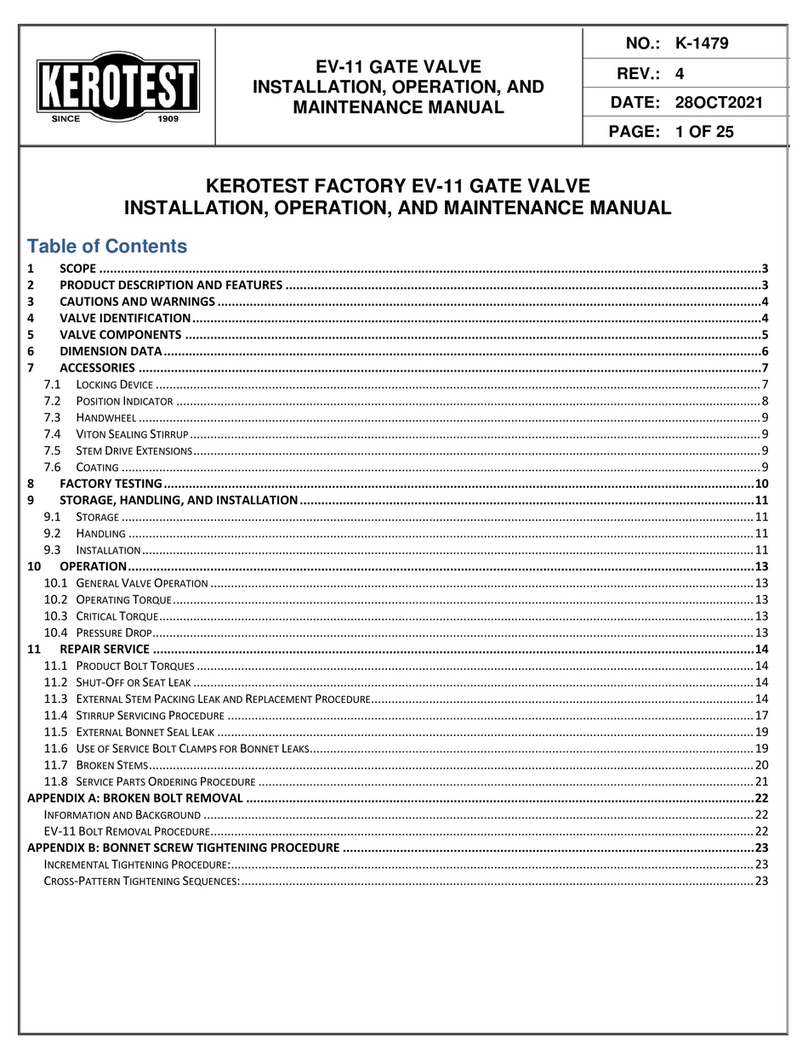
Kerotest
Kerotest EV-11 Installation, operation and maintenance manual
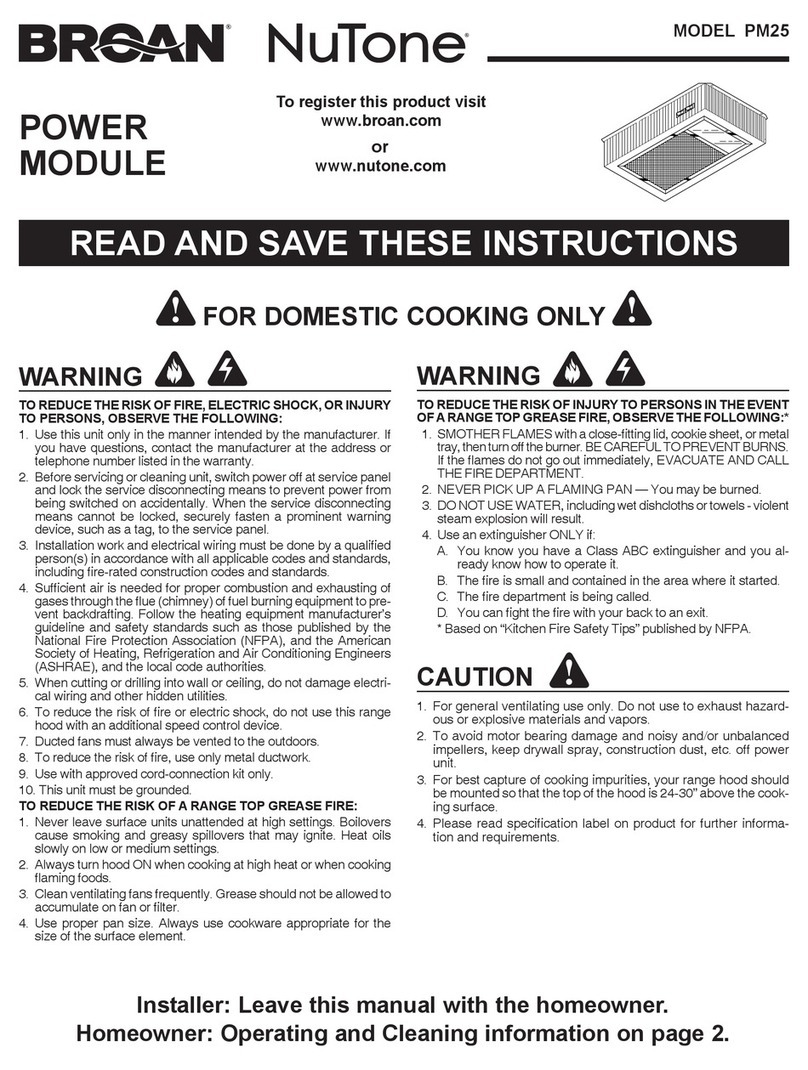
NuTone
NuTone PM44 instructions
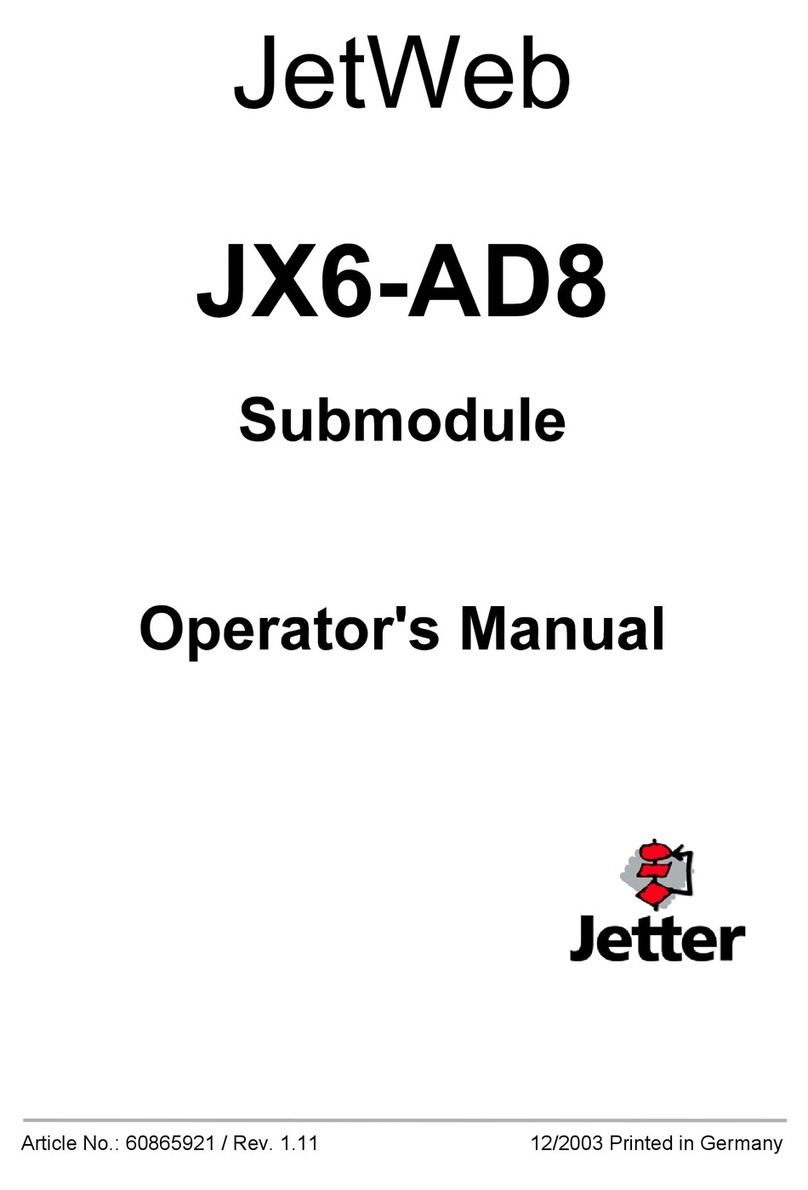
Jetter
Jetter JetWeb JX6-AD8 Operator's manual

Skipper
Skipper SB-100-SA Installation and operation manual
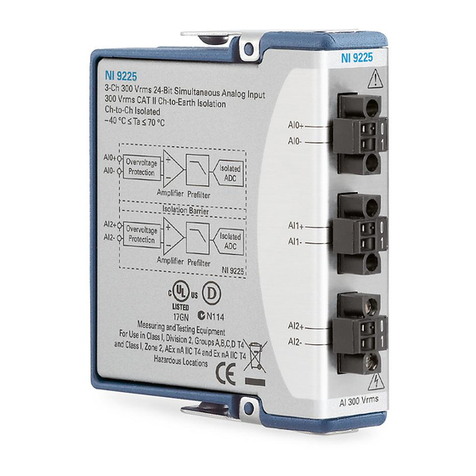
National Instruments
National Instruments 9225 CALIBRATION PROCEDURE
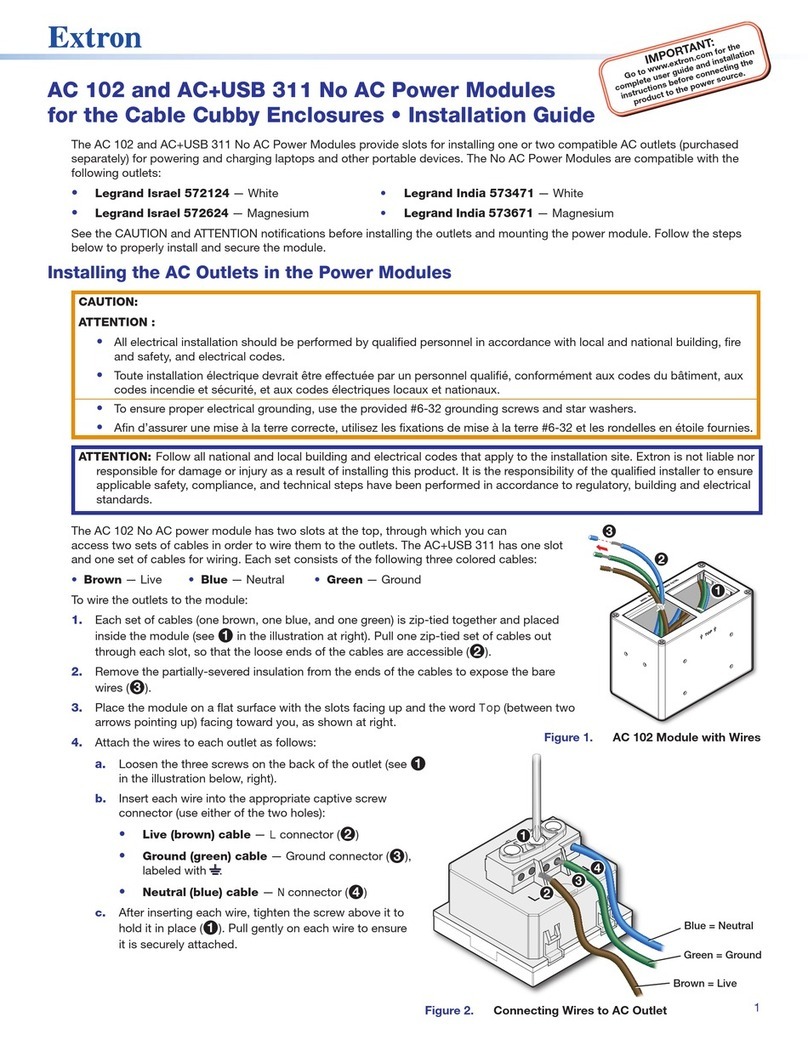
Extron electronics
Extron electronics AC 102 installation guide
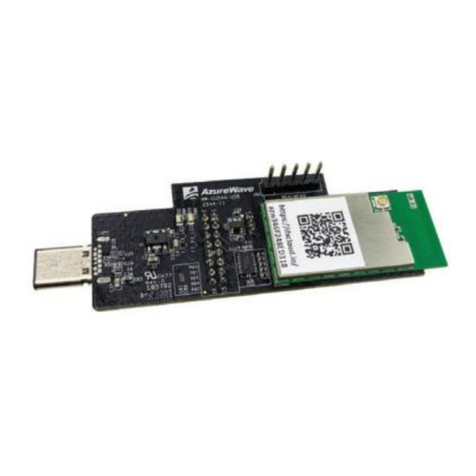
Infineon
Infineon AIROC IFW56810 Getting started
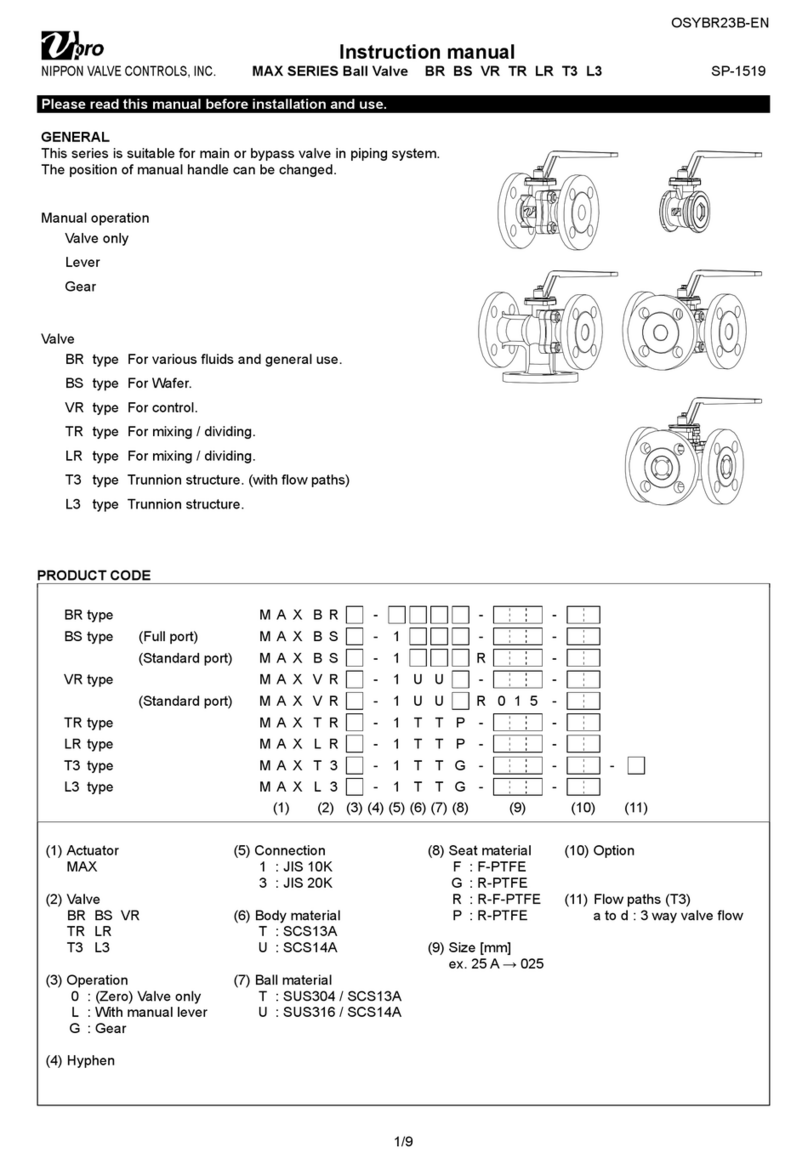
NIPPON VALVE CONTROLS
NIPPON VALVE CONTROLS Vpro MAX Series instruction manual
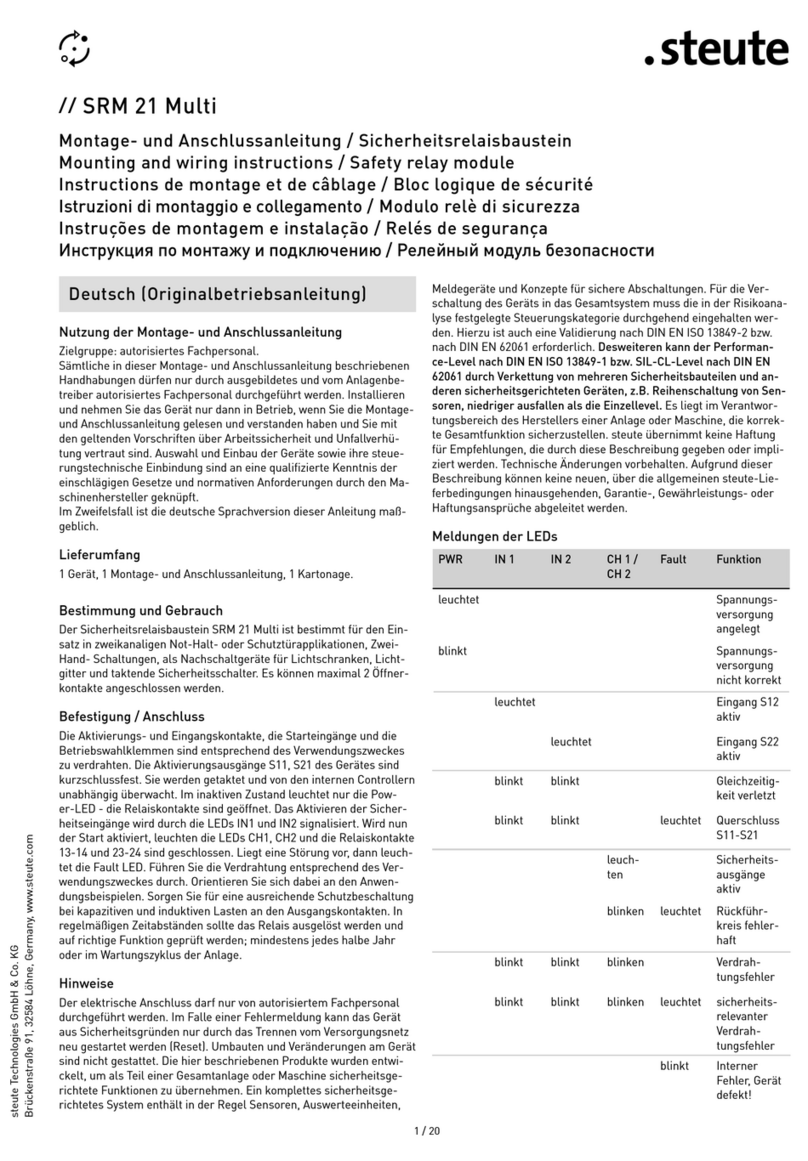
steute
steute SRM 21 Multi Mounting and wiring instructions
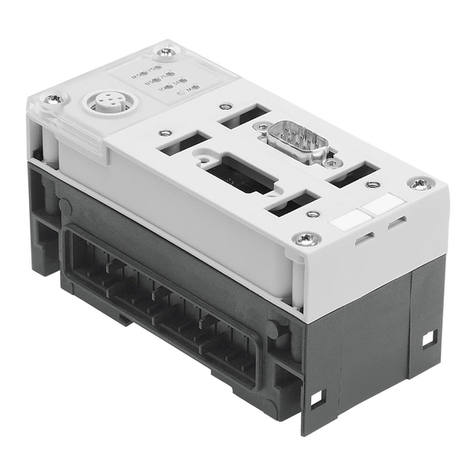
Festo
Festo CPX-FB11 Brief description
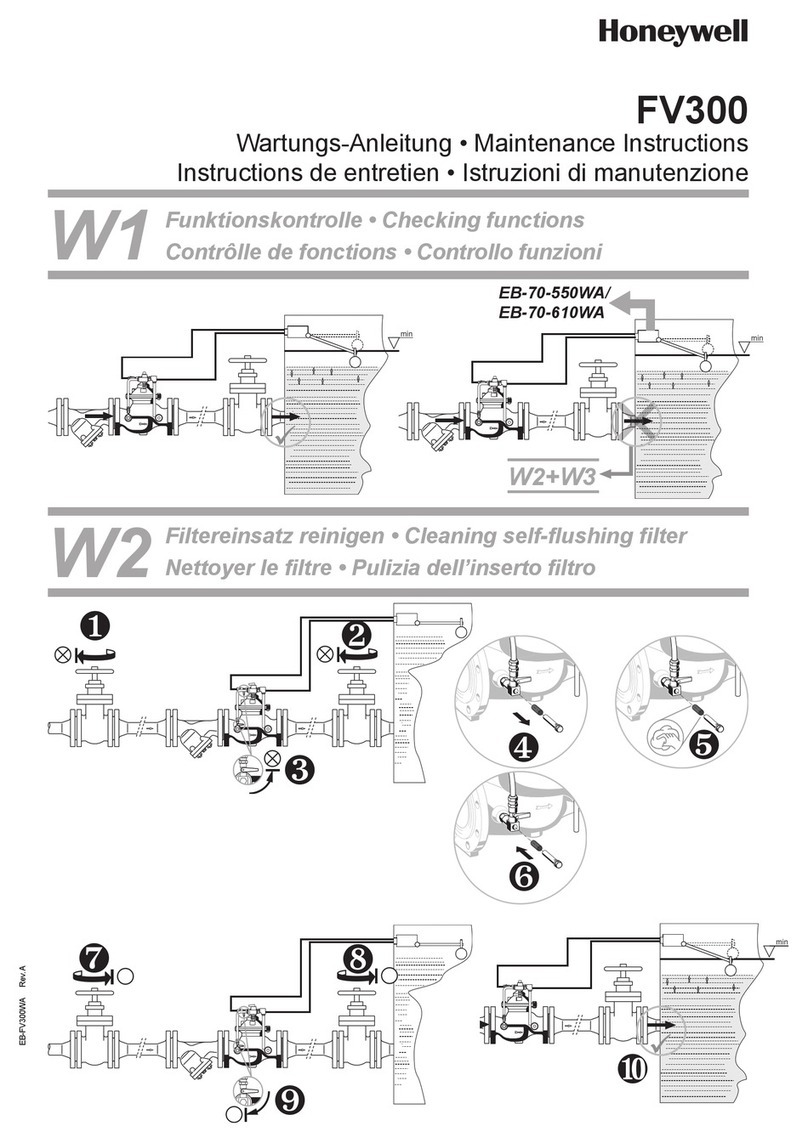
Honeywell
Honeywell FV300 Maintenance instructions
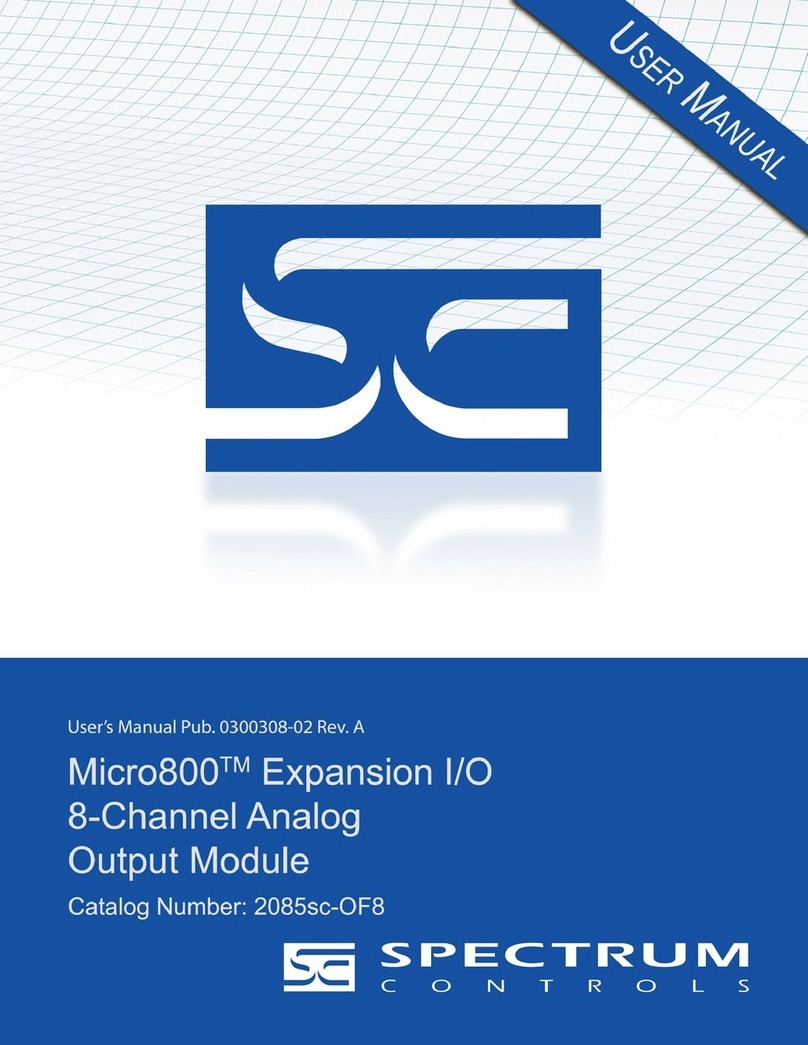
Spectrum Controls
Spectrum Controls Micro 800 user manual
